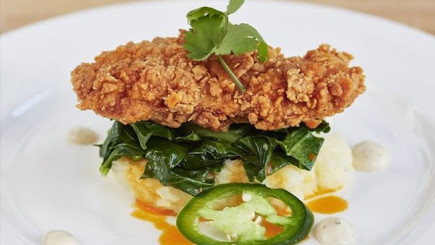

Food design gives us a taste of innovation. It visualizes, speculates, challenges and problem-solves. Here are some examples of how food design challenges us to rethink the way we produce, store, process and consume our food. Here's what food design can do:
How are we going to hand out everyone their daily greens? From mossy funguses to microbes; widening our horizon on what edible greens our planet has to offer might be an efficient and nutritious solution. And how about altering our legumes to our very needs? Feeding our population requires us to be inventive and efficient. Here we lay out three possible visions of a greener future.
Fungus could become one of your five a day. They are easy to grow, even in harsh climates and environments. Julia Schwarz has developed a variety of food products from lichen, a robust fungi-like species that grows on plants, tree bark and rocks. According to the designer, lichen can become a rich source of nutrition in the coming years, especially given its dexterity and owing to being one of the oldest living species on the planet. With the ability to grow on other planets like Mars, this could prove to be the superfood of the future.
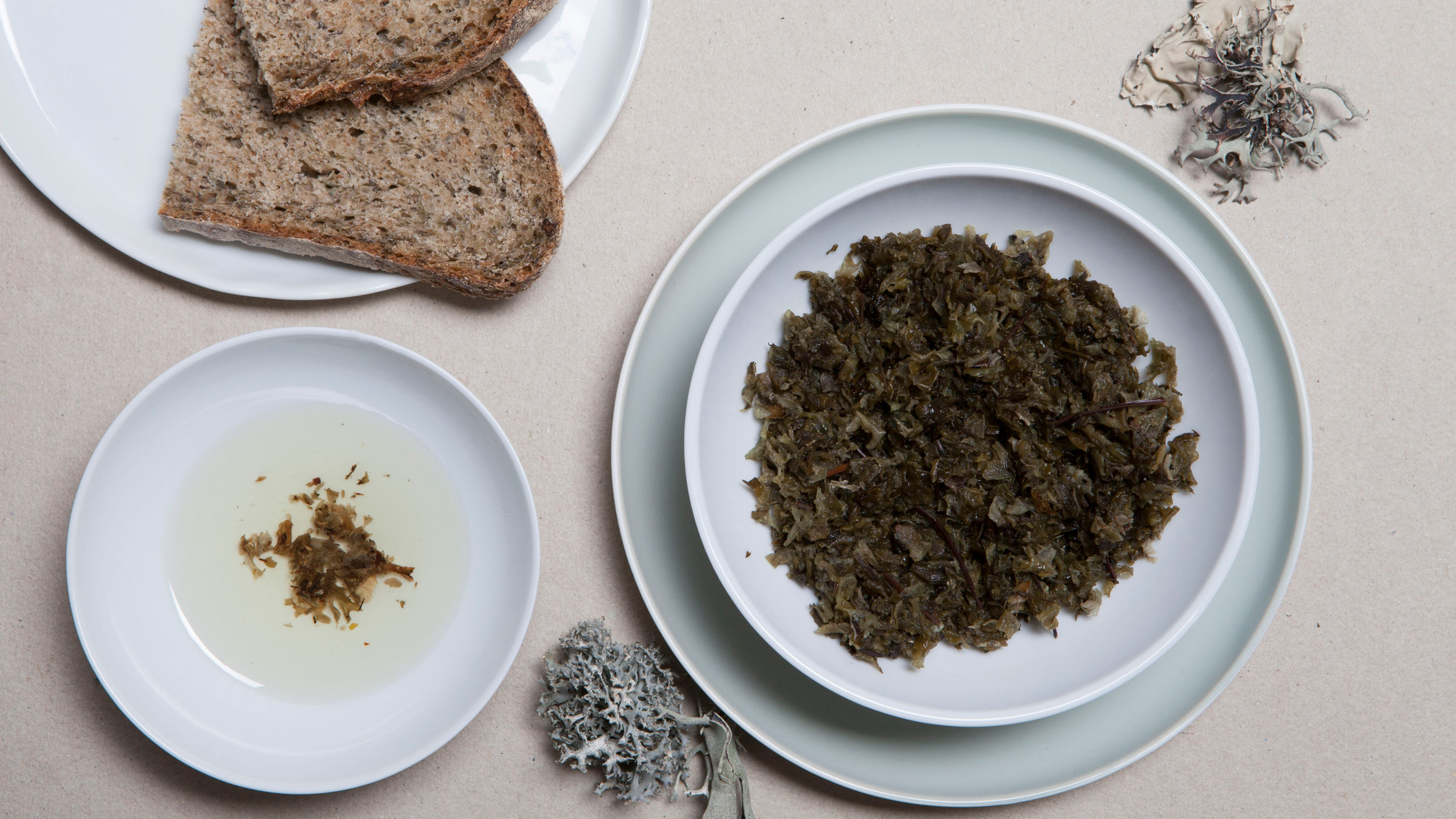
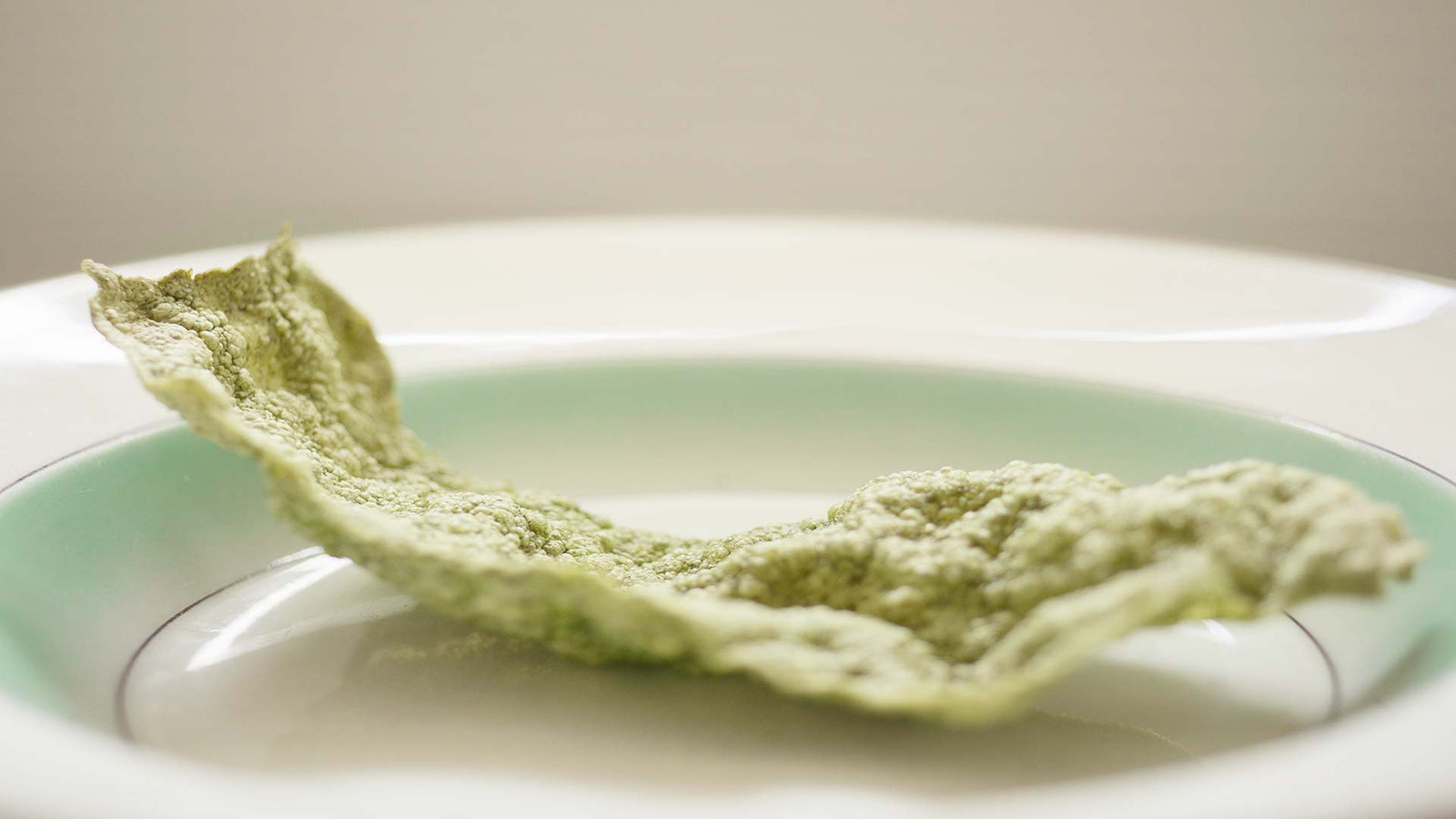
One of the planet's oldest evolving plants may soon be the supercrop of the future. Microalgae are versatile; they can serve as a form of protein yet instead of polluting the air, it rather improves air quality due to its ability to absorb carbon dioxide and turn it into oxygen. On top of that, the supercrop can be grown almost anywhere on our planet and grows fast: it doubles its size within a day. Danish research & design lab SPACE10 collaborated with three young architects to envision what such a future algae farm could look like with their Algae Dome a four metre pavilion holding a photo-bioreactor capable of microalgae production.
So we have alternative crops, but how much influence do we have on their growth and nutritional benefits? The Future Food Formula, a project by food designer Chloé Rutzerveld, speculates about a future where qualities of fruits and vegetables can be fully personalized. Chloé envisions that we have full control over our crops - only an app is needed. Personalized ‘growth recipes’ composed of elements like water usage, soil composition and PH values, allow us to change the size, shape and even the nutrients of the crops without the use of GMOs. The ability to alter the characteristics of our food explores new horizons in the agricultural field, offering flexibility, practicality and personalization in the future of food.
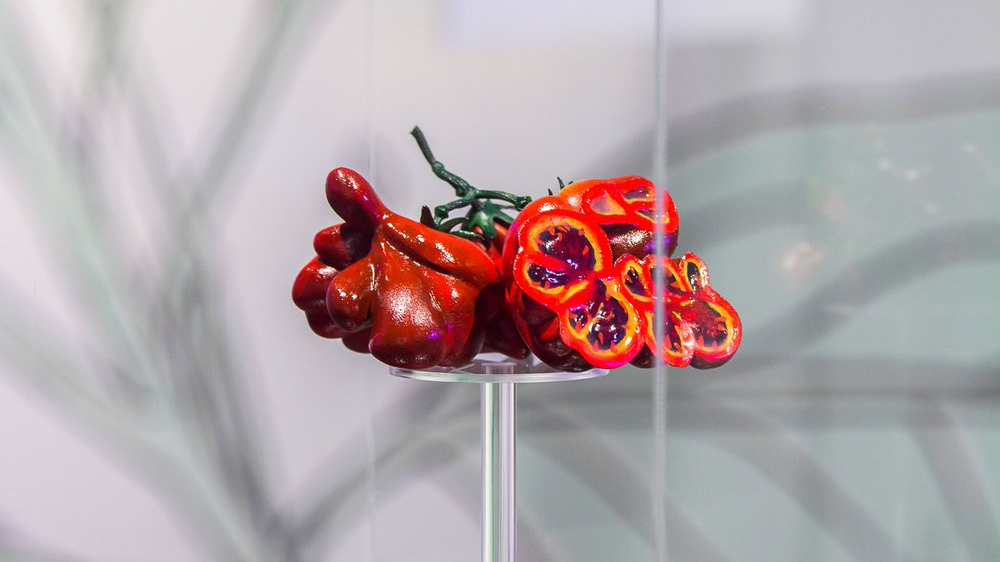
Now we have our greens, but what else will fill our plates? Although there is a rise in meat substitutes on the market, demand for the real deal is still prominent. Will our future meat be grown in a lab—instead of born on a farm? The following food design projects are proving you can have your steak and eat it too, no harm needed.
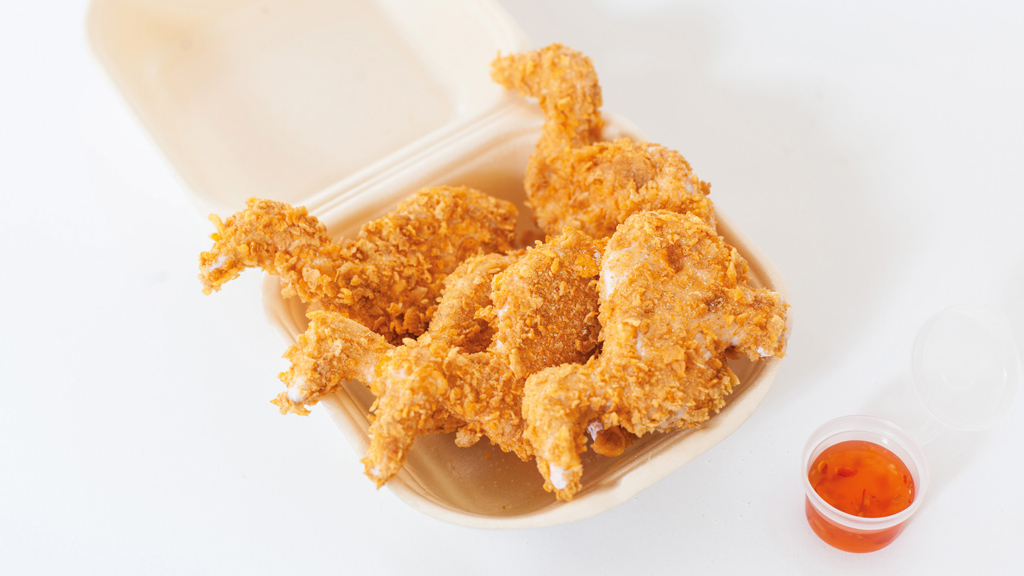
According to Bistro In Vitro, the future of meat will take place in the lab, not the farm. In vitro meat (meat grown from animal-derived cells) is a more sustainable alternative to traditional meat. Even though interest in cultivated meat is growing in popularity, it is not yet readily available. In order to envision and explore the possibilities of in vitro meat, the world’s first speculative lab-grown meat restaurant, Bistro in Vitro, was ‘opened’. The restaurant offers a wide range of dishes, scrutinizing the future potential of in vitro. What if we could grow meat from extinct species like the dodo? Or indulge in guilt-free foie gras?
So we grow our meat in the lab, but how will our society accept it? Can we still have our T-bone, and nibble on a chicken wing? Food designer Yuval Yancovitch is determined to deliver a recognizable food experience for in vitro meat. Her project Evolving In Vitro centers around 3d printing scaffolds, mimicking (herring)bones. The miniscule holes in the scaffolds allow the meat to attach to it in order for it to cultivate in and around the frame. Being able to deliver realistic food experiences with in vitro can make it easier to integrate this new technology into society, from the lab to the plate.

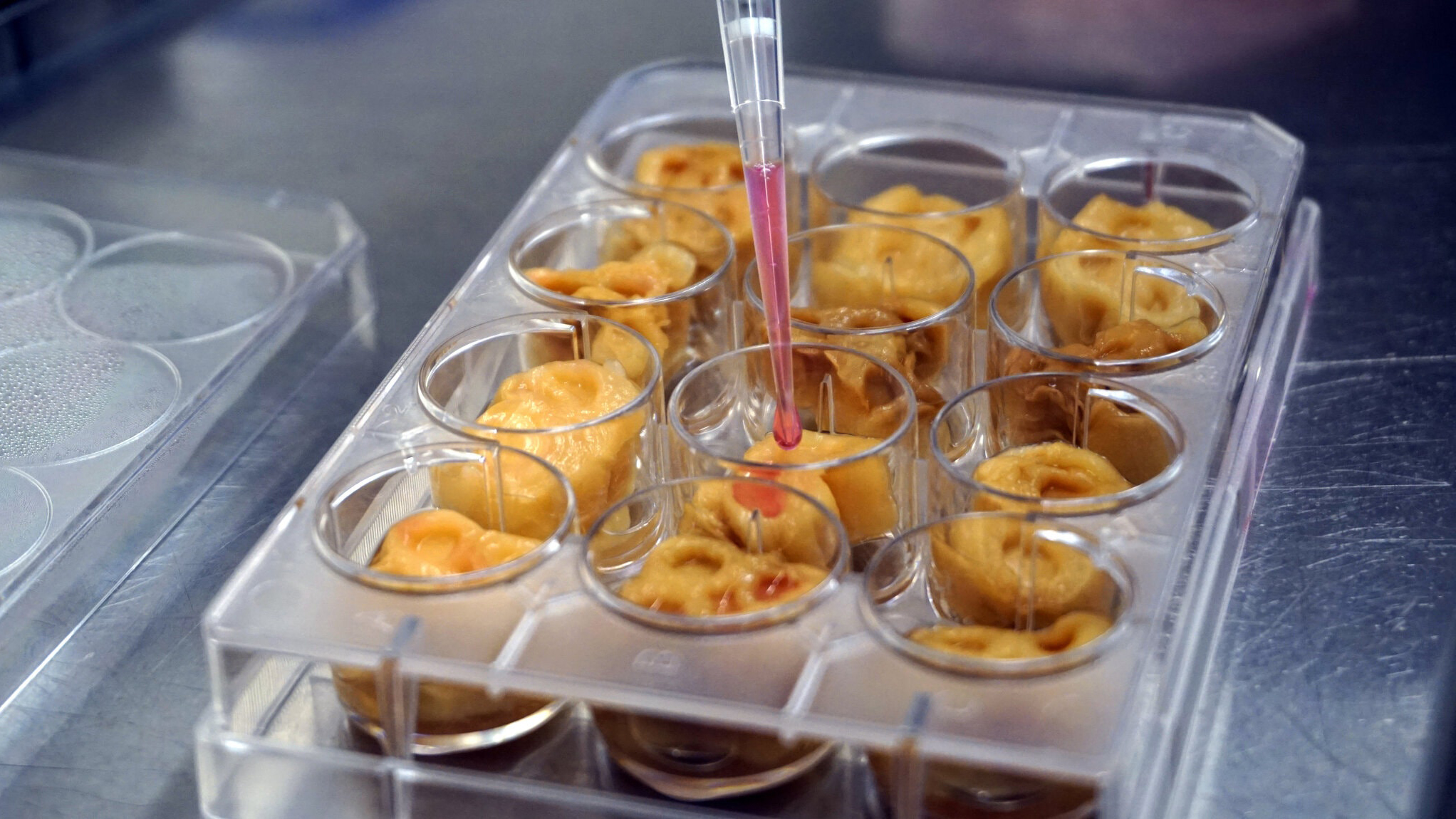
Food design can stretch the boundaries of our society and raise ethical questions. If in vitro allows us to grow meat from the cells of any animal, could we -and maybe even more important: should we- grow meat from humans too? Ourochef took the saying 'you are what you eat' a little too literally and presented a potential future scenario where meat is cultivated from one's own cells: the Ouroborus Steak. You can even grow your mini me’s in your own home, enabling you to harvest tiny human steaks. For many a distasteful idea, for some a sustainable solution to our environmental problems regarding food production. Maybe your future invitations will say BYOM instead of BYOB!
We offered a vision of what will be on your plate in the future, but what happens after you’ve finished your meal? An estimated 1.3 billion tonnes of food is thrown away globally, which is a lot of grub we still might want to make use of. Say goodbye to your bins, because according to some food designers the future of food waste is edible.
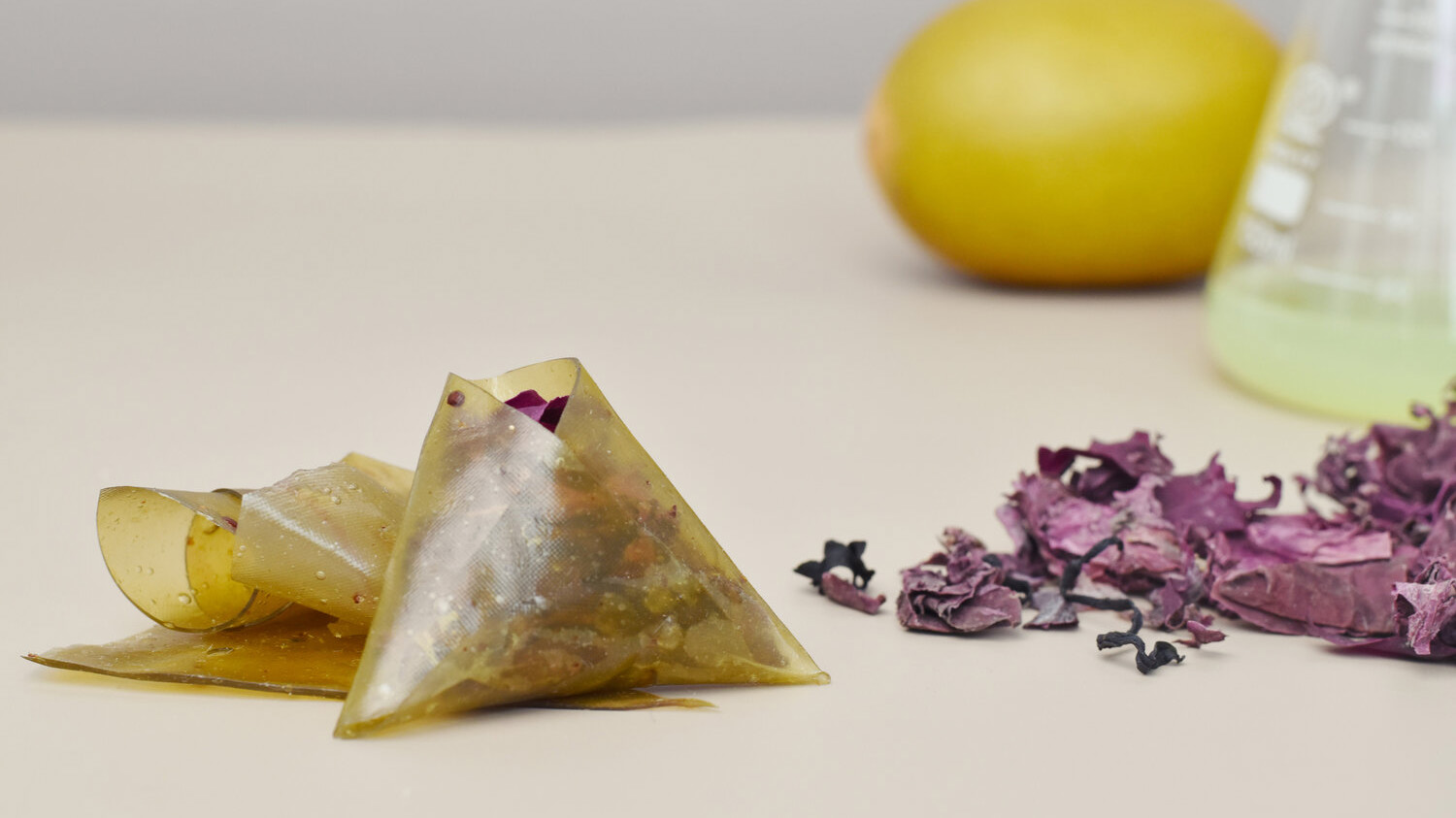
Holding on to your rubbish is in the past, you can now eat your plastic wrappers right after you’ve used them. Multidisciplinary experience design artist Wenwen Fan has created an edible, sustainable alternative to current packaging choices using seaweed. Seaweed U seeks to reframe the experience of using and eating seaweed as an eco-friendly superfood of the future.
We hand in our batteries and empty bottles, but what if we could turn in our food waste? Huge 3D printers will mash today’s dinner into tomorrow’s lunch. Designer Elzelinde van Doleweerd explored the possibilities regarding 3D-printing edible products from food waste. With her company Uprinting Food the designer is able to mash local residual food streams into a big puree, capable of being printed into a tasty treat. Depending on your location’s local cuisine, ingredients may vary: from stale bread to overripe bananas; mash it, bake it, then eat it.
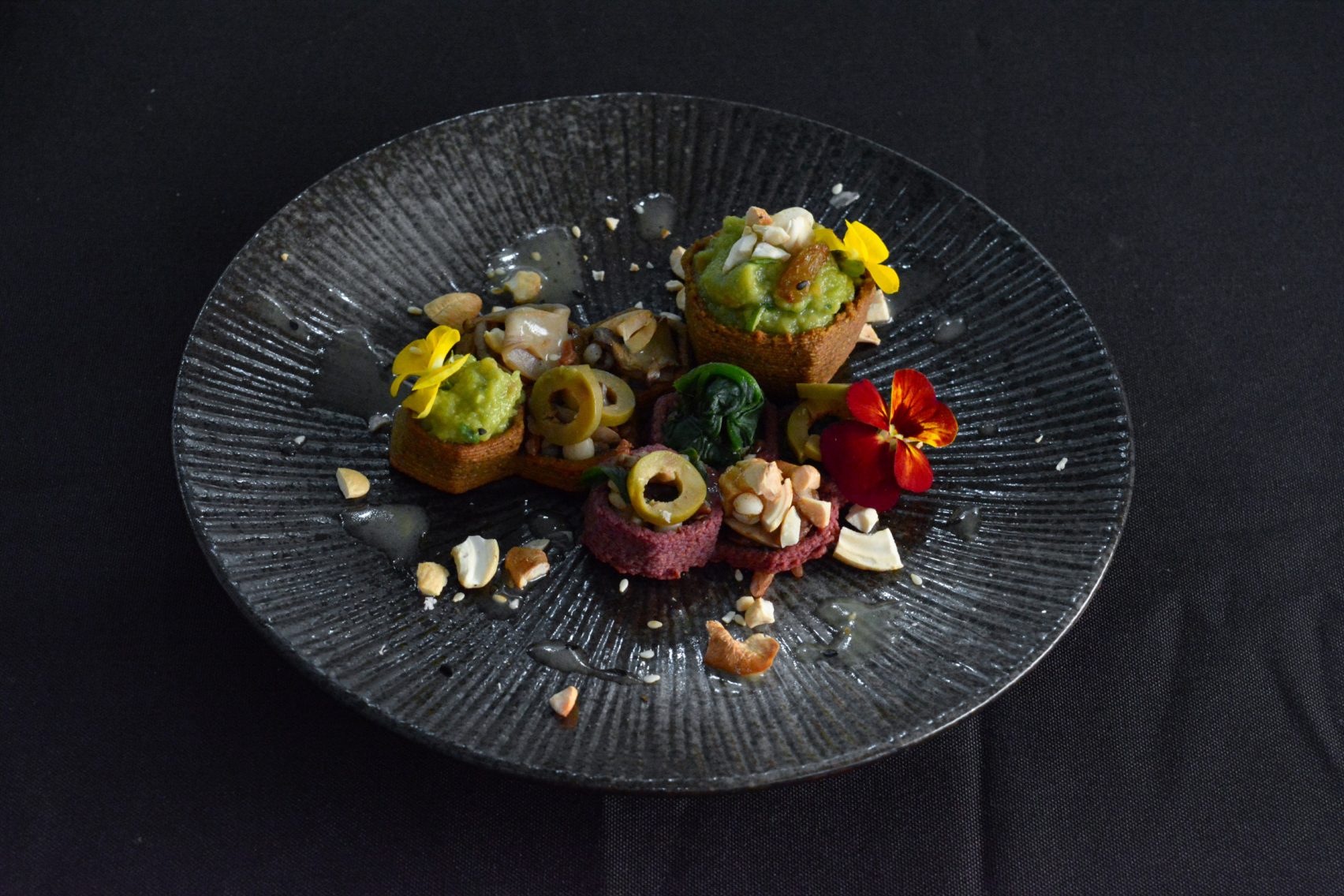
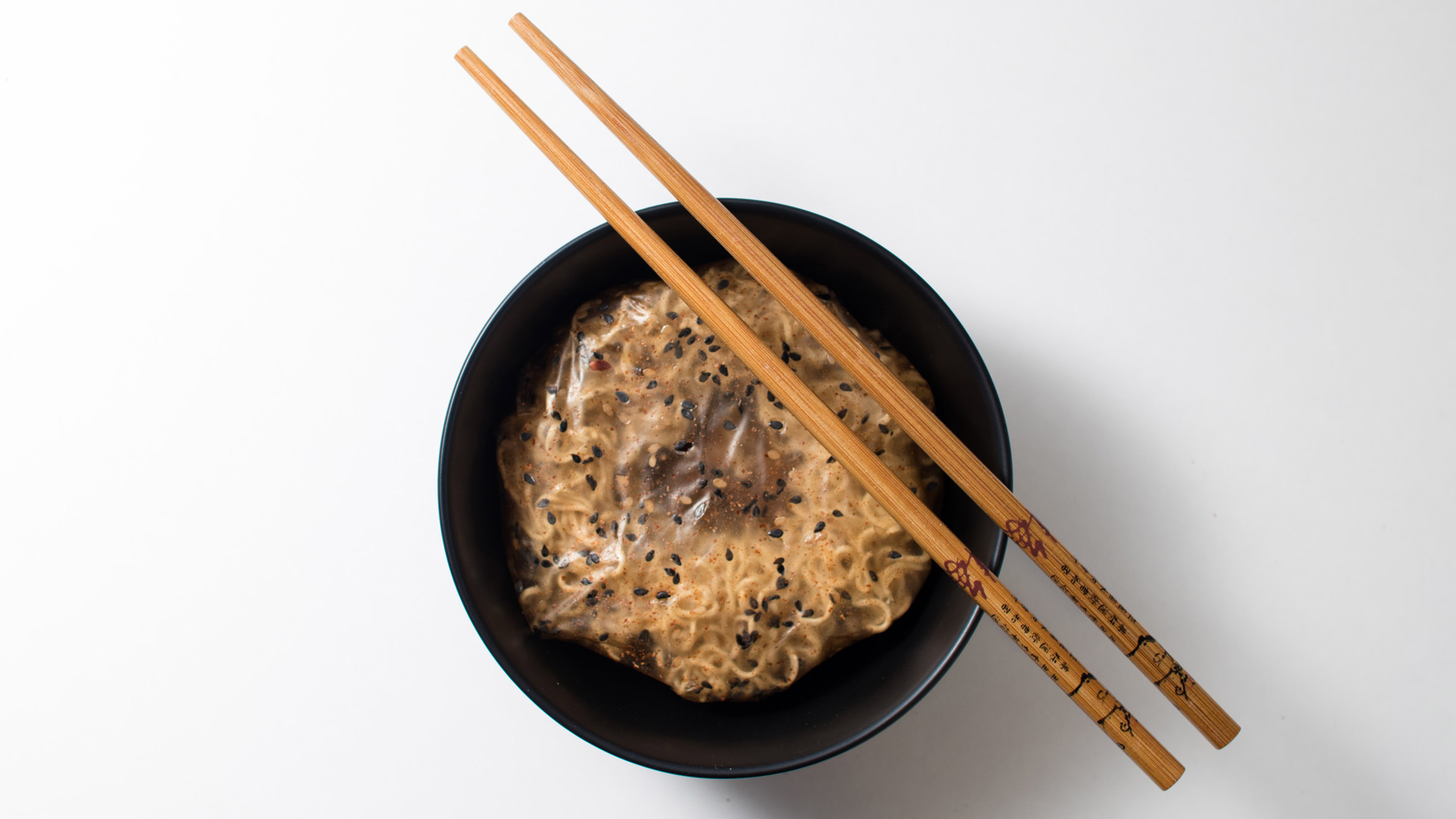
Another alternative to edible packaging is offered by product design student Holly Grounds. Convenient foods like instant noodles often contain a lot of plastic sachets, containing sauces and spices which end up on the endless piles of plastic containers. Holly’s solution is using a type of flavorless biofilm embedded with a multitude of flavoring and spices that can contain the noodles safe and sound. But when exposed to some hot water, it is able to dissolve and turn into a tasty sauce. Edible packaging may allow us to eat us a way out of our problems regarding plastic.
From growing meaty provisions to soup-based packaging, food design proves again and again that the sky's the limit (and maybe edible too). In this case it provided sustainable alternatives to current polluting food industries, allowed us to dream about ultimate personalisation and turned unpurposed materials into valuable resources. By showing ingenuity and cunning, food design reevaluates the relationship we have with food and can change cultures, visions and hopefully, the future too.
This editorial was conducted as part of the research for the Embassy of Food 2021. These projects explore how food designers can use technology, food waste, health, education, protein transition, non-food and packaging to imagine the future of food. The Embassy of Food is made possible in part by the DOEN Foundation, Prince Bernhard Cultuur Fonds, Albert Heijn and the Dutch Design Foundation.